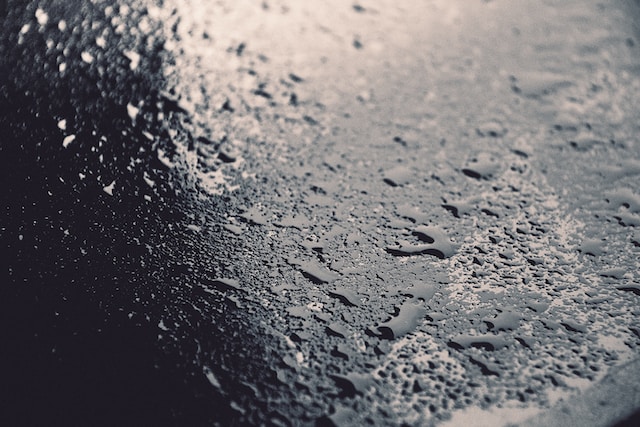The recent launch of the RICS, Historic England, and PCA (Property Care Association) joint position statement on the investigation of moisture and its effects on traditional buildings is being heavily discussed among surveyors and property owners alike. In this article, we’ll explore what rising damp is, the causes, and answer your commonly asked questions.
What is meant by ‘rising damp’? Whilst there are those who argue moisture can’t rise and any mention of the term ‘rising damp’ should be banned, anyone who has observed a compromised DPC, a leaking gutter, or a damp basement will have seen evidence to suggest that moisture originates from one particular point can in fact spread from one material or element of the building to another – this being called rising damp.
Read on to understand more about rising damp, what it looks like, and how you can treat rising damp in an old house.
Is Rising Damp Real?
Although some argue that rising damp is a myth, this isn’t true. Although rare, damp can in fact spread upwards from one element of a building to another. Lateral damp, penetrating damp, condensation and ventilation issues, however, are routinely disregarded or misinterpreted as rising damp in the name of making a sale, sometimes maliciously, but often through ignorance. This has resulted in many thinking that rising damp is a myth.
There is scientific evidence to support these observations, a process referred to as osmosis: diffusion of solvent molecules through a selectively-permeable material from a region of high water potential to a region of low water potential.
In order for this to occur, evaporation of moisture needs to be prevented to enable a sufficient build-up of moisture to transfer between masonry courses.
Up, down, left or right: it makes no difference to the underlying process of diagnosis which should be followed. Diagnosis and remedial works should be holistic, seeking to minimise intervention and budgets required to ensure management or remediation of risks is both proportional and accessible. Find out more about diagnosing rising damp below.

What Does Rising Damp Look Like?
Rising damp looks slightly different from condensation, ventilation issues, and other types of dampness. Below, we’ve outlined the telltale signs that you have rising damp:
- Water Stains & tidemarks on your walls (typically brown in colour and coming from the floor)
- Rotten skirting
- Bubbling or flaking plaster
- Peeling wallpaper
- Musty smells
- Mould (usually black) on your walls
Why Do Some People Think Rising Damp Doesn’t Exist?
With the launch of the ‘Joint Position Statement – Investigation of moisture and its effects on traditional buildings’ by the Royal Institution of Chartered Surveyors (RICS), Historic England and the Property Care Association (PCA), damp and whether it can in fact be transient is once again being discussed amongst surveyors and property owners alike.
There is even talk of whether we should be using the term ‘rising damp’ or ‘damp’ at all as this suggests there is a problem which naturally has a solution and perpetuates the idea that materials should be completely dry in order to be in repair.
This often causes confusion for the general public, as almost all materials require some level of moisture and the real issue is often an excess level of moisture which has a detrimental impact on a building’s fabric or its finishes.
How Do You Treat Rising Damp in an Old House?
The vast majority of damp or rising damp issues relate to poorly considered repairs, alterations or adaptations of traditional buildings. This may sometimes be resolved by a reversal of previous changes, but to do this requires an appropriate assessment of the situation in order to provide an accurate diagnosis.
The assessment of damp issues requires a detailed understanding of the nature of the building, its construction and materials, as well as what alterations and repairs have been carried out to it in the past.
Placing the issue of excess moisture in simplistic black-and-white terms, often to sell a certain product, is something that the ‘damp industry’ often does. The wider construction industry has done this for decades to the detriment of many traditional buildings and their owners’ bank balances.
Whether that’s the installation of an internal or external waterproofing system, a chemical damp-proofing system, Schrijver damp-proofing system, these are largely unnecessary alterations which fail to resolve the primary cause of an issue.
More often than not, the situation is more nuanced, requiring either no further action, monitoring, or progressive alterations in an attempt to return the building to its perceived equilibrium.
If you would like to find out how to treat damp in an old property, read our most recent blog: Damp in Old Houses: What Causes it & How To Fix it
Choose Your Damp Assessor Carefully
Assessment requires a detailed understanding of the nature of the building, its construction, and materials, as well as what has been carried out to it in the past (alterations and repairs) because this could have a significant influence. The assessor needs to understand what is actually happening, and this includes whether there is damage occurring, or whether it is a potential future issue rather than a present active problem.
Many damp proofing companies do not have the incentive to provide independent advice to owners of historic buildings, as many use surveys as a lead generation tool for their products, which broadly do not adhere to these principles in order to sell products. This is what has made the ‘damp industry’ a dirty word in many members of the public’s eyes,, chasing sales at all costs.
As always, those who seek an adversarial position in this debate often do so to direct members of the public to themselves for solutions, rather than present clear answers to problems, and to maximise their own financial gain.
The only way the current situation will improve is through open discussion between all professional bodies and their members, which hopefully the latest position statement will begin to improve. However, we believe many aspects of the industry will need to change in order to serve the public better.
What Should You Do If You Have a Damp Problem?
Rising damp is often misdiagnosed, so we’d advise that you get a professional damp surveyor involved, as these will offer honest and tailored advice with your best interests at heart. Choose a professional with verified qualifications and experience, as this is often the most cost-effective option in the long term. Look for an independent surveyor, accredited by the RICS and/or PCA, with the relevant experience to offer you honest, pragmatic advice.
Independent Surveys From Fourth Wall
If you’re concerned about dampness in your home, enlist the help of qualified, professional surveyors from Fourth Wall. Our Chartered Building Surveyors can offer reliable advice and outline the most important next steps to take.
If you have a question, or you’d like to book a free 30-minute consultation, don’t hesitate to contact our team via phone, email, or by completing our contact form.
Related Questions
Is Rising Damp Dangerous?
Yes. Excess humidity, often caused by dampness, is one of the most common reasons for mould inside a home. Mould spores are harmful to our health, and in rare cases can lead to allergic reactions, respiratory issues, and asthma attacks. Rising damp is likely to be most harmful to babies, older adults, and others with a weakened immune system.
How High Does Rising Damp Go?
Rising damp can rise up to 1.5 metres in height, but it can rise even further in some rare cases. A qualified damp surveyor will be able to identify how high the damp has risen, as well as advise you on the best remedial actions to take.
Do RICS Surveys Advise On Damp?
Our surveys are bespoke, developed with you in mind and designed to help you to fully understand your property. We include a section within our report specifically advising on damp, timber issues and condensation. Whilst our inspections are visual, if we identify particularly concerning elements that require an invasive damp inspection we’ll let you know and guide you through the next steps.
Is Damp One of the Main Issues Found by Surveyors?
Our surveys will identify a number of issues and provide you with remedial advice and budget costs so you can move forward with your purchase with confidence. We have an overview of some of the most common issues found on surveys here in one of our Essential Homebuyer Guides.
To learn how we write and review our content for accuracy, take a look at our Editorial Policy.




